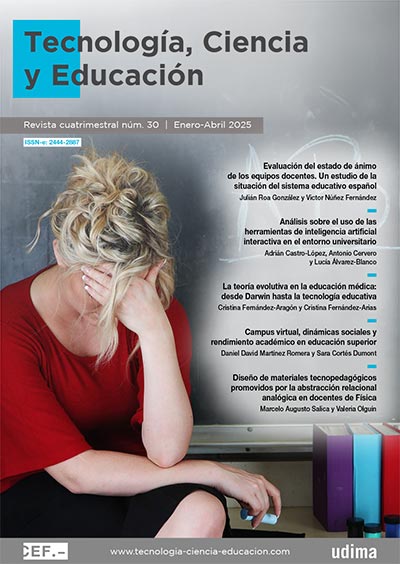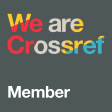Closing the educational gap for first generation learners: an exploratory study of interactive learning for underprivileged children in India
DOI:
https://doi.org/10.51302/tce.2025.19449Keywords:
interactive teaching and learning, interactive learning for primary school, first generation learners, India, disadvantaged classes, equity, interactive technology for learningAbstract
Previous research studies have indicated that interactive tools where information is presented through computer mediated technology using elements like text, still images, graphics, animation, video, audio, etc., increase student performance as students (men and women) give more attention and enjoy lessons taught with interactive tools. In India, an increasing number of students belonging to disadvantaged classes withdraw from schools due to a lot of contributing factors such as inability to afford education, disinterest of parents, access to transportation, etc. This study, by applying a mix-methods approach, explores the potential of an interactive learning prototype of a website, in increasing engagement, retention and learning level of grade 4 students who are first generation students. In-class observation and semi-structured interviews, tests, and a questionnaire were used as instruments to collect qualitative and quantitative data from 58 participants. Two types of groups, experimental and control, were examined in the Environmental Science and Maths classes. Experimental groups were taught with the website while control groups were taught in a traditional class. Results show the average test scores of experimental groups in both the subjects to be higher than the control groups. Students preferred learning through interactive tools with colourful images and animations.
Downloads
References
ASER Centre. (2021). Annual Status of Education Report (Rural) 2021. http://asercentre.org/Keywords/p/394.html
Argüelles Cruz, A. J, Cortés Díaz, H. D. and Piñal Ramírez, O. E. (2023). Ramath: mathematics teaching app. Tecnología, Ciencia y Educación, 25, 93-110. https://doi.org/10.51302/tce.2023.2800
Bourn, D. and Soysal, N. (2021). Transformative learning and pedagogical approaches in education for sustainable development: are initial teacher education programmes in England and Turkey ready for creating agents of change for sustainability? Sustainability, 13(16), 1-19. https://doi.org/10.3390/su13168973
Çetin, H. S. (2018). Implementation of the digital assessment tool «Kahoot!» in elementary school. International Technology and Education Journal, 2(1), 9-20.
Chaturvedi, B. K. (2020). Six million children out of school in India due to the impact of COVID-19; girls most affected. National Herald. https://www.nationalheraldindia.com/india/six-million-children-out-of-school-in-india-due-to-the-impact-of-covid-19-girls-most-affected
Cogill, J. (2003). The use of interactive whiteboards in the primary school: effects on pedagogy. ICT Research Bursaries, 52.
Cross, A., Ashok, B., Bala, S., Cutrell, E., Datha, N., Kumar, R., Kumar, V., Parthasarathy, M., Prakash, S., Rajamani, S., Sangameswaran, S., Sharma, D. and Thies, W. (2014). Online learning versus blended learning: an exploratory study. Proceedings of the first ACM conference on Learning@ scale conference (pp. 179-180). https://doi.org/10.1145/2556325.2567869
Dey, P. and Bandyopadhyay, S. (2019). Blended learning to improve quality of primary education among underprivileged school children in India. Education and Information Technologies, 24(3), 1.995-2.016. https://doi.org/10.1007/s10639-018-9832-1
Guamán-Guaya, B. and Cid-Górriz, R. (2024). Project work from a virtual learning platform: satisfaction experiences of a group of primary school students. Tecnología, Ciencia y Educación, 27, 143-166. https://doi.org/10.51302/tce.2024.18641
Guo, X. and Wu, M. (2018, May). An empirical study of rural primary school students' English knowledge construction based on interactive mobile learning application. Proceedings of the 2018 International Conference on Distance Education and Learning (pp. 6-10). https://doi.org/10.1145/3231848.3231852
Hilliard, A. and Kargbo, H. F. (2017). Educationally game-based learning encourages learners to be actively engaged in their own learning. International Journal of Education and Practice, 5(4), 4560. https://doi.org/10.18488/journal.61.2017.54.45.60
Kennewell, S. and Morgan, A. (2003, July). Student teachers' experiences and attitudes towards using interactive whiteboards in the teaching and learning of young children. Proceedings of the international federation for Information Processing Working Group 3.5 Open Conference on Young Children and Learning Technologies (Vol. 34, pp. 65-69).
Kundu, A. (2018). Blended learning in Indian elementary education: problems and prospects. Journal of Online Learning Research, 4(2), 199-227.
Ministry of Statistics & Programme Implementation. (2019). Key Indicators of Household Social Consumption on Education in India NSS 75th Round (July 2017-June 2018). Press Information Bureau, Government of India. https://www.pib.gov.in/Pressreleaseshare.aspx?PRID = 1593251
Nusir, S., Alsmadi, I., Al-Kabi, M. N. and Sharadgah, F. (2012). Studying the impact of using multimedia interactive programs at children ability to learn basic math skills. Acta Didactica Napocensia, 5(2), 17-32.
Rachmadtullah, R. M. S. Z., Ms, Z. and Sumantri, M. S. (2018). Development of computer-based interactive multimedia: study on learning in elementary education. International Journal of Engineering & Technology, 7(4), 2.035-2.038.
Ramya, M. (2012). Rote learning an evil in education system, national survey reveals. The Times of India. https://timesofindia.indiatimes.com/home/education/news/Rote-learning-an-evil-ineducation-system-national-survey-reveals/articleshow/17564012.cms
Roschelle, J. M., Pea, R. D., Hoadley, C. M., Gordin, D. N. and Means, B. M. (2000). Changing how and what children learn in school with computer-based technologies. The Future of Children, 10(2), 76-101.
Schmitz, B., Czauderna, A., Klemke, R. and Specht, M. (2011). Game based learning for computer science education. Proceedings of the 2011 Computer Science Research Education Conference (pp. 81-86).
Shager, H. M., Schindler, H. S., Magnuson, K. A., Duncan, G. J., Yoshikawa, H. and Hart, C. M. (2013). Can research design explain variation in head start research results? A meta-analysis of cognitive and achievement outcomes. Educational Evaluation and Policy Analysis, 35(1), 76-95.
Sinha, S. (2011). Does Khan Academy really work? HuffPost. http://www.huffingtonpost.com/shantanu-sinha/does-khan-academy-really_b_946969.html
Stratton, S. J. (2021). Population research: convenience sampling strategies. Prehospital and Disaster Medicine, 36(4), 373-374. https://doi.org/10.1017/S1049023X21000649
Tembang, Y., Purwanty, R., Palobo, M. and Kabrahanubun, R. I. (2020). Development of interactive based powerpoint learning media in the class IV students of merauke basic school. Proceedings of the 4th International Conference on Learning Innovation and Quality Education (pp. 1-6).
Tobin, E. and Hieker, C. (2021). What the EdTech experience in refugee camps can teach us in times of school closure. Blended learning, modular and mobile programs are key to keeping disadvantaged learners in education. Challenges, 12(2), 19. https://doi.org/10.3390/challe12020019
Yip, F. W. and Kwan, A. C. (2006). Online vocabulary games as a tool for teaching and learning English vocabulary. Educational Media International, 43(3), 233-249. https://doi.org/10.1080/09523980600641445
Downloads
Published
Versions
- 2025-01-10 (2)
- 2024-12-09 (1)
How to Cite
Issue
Section
License
Copyright (c) 2024 Swaralipi Roy Chowdhury Samanta, María Victoria Soulé

This work is licensed under a Creative Commons Attribution-NonCommercial-NoDerivatives 4.0 International License.


























